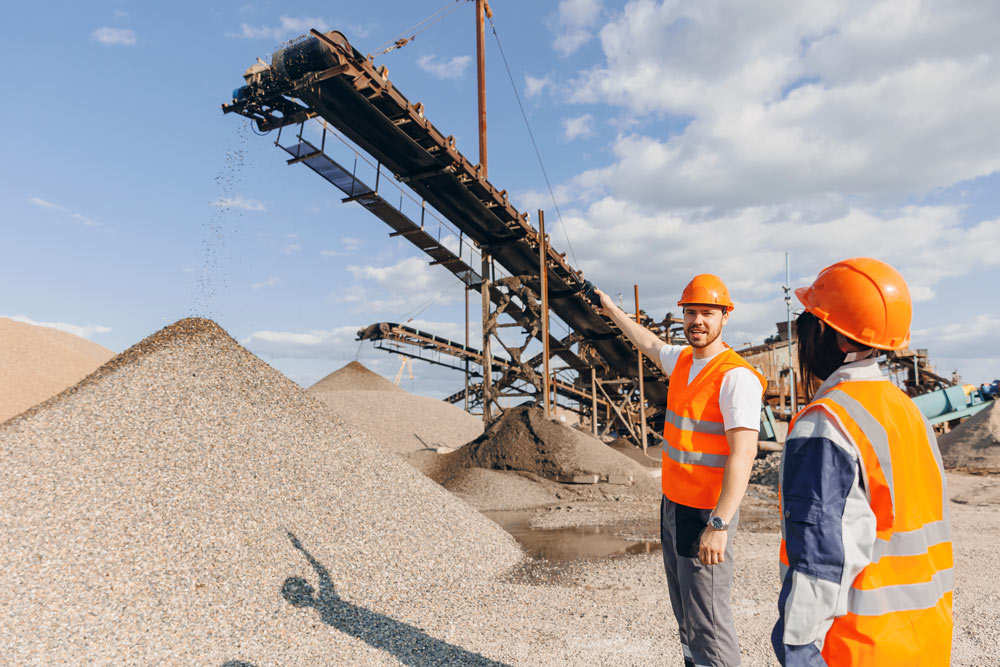In the quarry and mineral industry, compliance with regulations is not just a legal obligation but also a crucial aspect of ensuring safety, sustainability, and operational efficiency. Conveyor belts are integral to quarry and mineral operations, facilitating the transportation of materials such as aggregates, minerals, and ores. However, failure to comply with industry regulations regarding conveyor belt safety and maintenance can result in costly fines, downtime, and potential hazards. In this blog post, we’ll explore the regulatory landscape of the quarry and mineral industry and discuss effective compliance strategies for conveyor belts.
Understanding Quarry & Mineral Industry Regulations: The quarry and mineral industry is subject to a variety of regulations and standards aimed at protecting the environment, ensuring worker safety, and promoting responsible mining practices. Some of the key regulations that impact conveyor belt operations in the quarry and mineral industry include:
- Occupational Safety and Health Administration (OSHA) Regulations: OSHA sets forth regulations and standards related to worker safety and health in the United States. These regulations include requirements for guarding, maintenance, and operation of conveyor belts to prevent accidents and injuries in quarry and mineral operations.
- Mine Safety and Health Administration (MSHA) Regulations: MSHA regulates safety and health standards in mining operations, including surface and underground mines. MSHA regulations cover a wide range of topics, including conveyor belt safety, maintenance, and training requirements to ensure compliance and mitigate hazards in quarry and mineral operations.
- Environmental Protection Agency (EPA) Regulations: The EPA regulates environmental standards and pollution control measures in the quarry and mineral industry to protect air, water, and land resources. Compliance with EPA regulations is essential for minimizing environmental impact and maintaining sustainability in mining operations.
Compliance Strategies for Conveyor Belts: To ensure compliance with quarry and mineral industry regulations, organizations must implement effective strategies for managing conveyor belts. These strategies encompass various aspects of conveyor belt operations, including maintenance, safety training, and environmental stewardship. Here are some key compliance strategies for conveyor belts in the quarry and mineral industry:
- Regular Maintenance and Inspection: Routine maintenance and inspection of conveyor belts are essential for identifying and addressing potential issues before they escalate into safety hazards or regulatory violations. Organizations should establish a comprehensive maintenance schedule and conduct regular inspections of conveyor belt components such as pulleys, rollers, and belts to ensure optimal performance and compliance with regulatory standards.
- Training and Education: Proper training and education are critical for ensuring that workers understand the importance of conveyor belt safety and compliance with industry regulations. Organizations should provide comprehensive training programs covering topics such as equipment operation, hazard recognition, emergency procedures, and regulatory requirements to empower workers to work safely and effectively in quarry and mineral operations.
- Hazard Identification and Risk Assessment: Conducting hazard identification and risk assessment is essential for identifying potential hazards associated with conveyor belt operations and implementing appropriate control measures to mitigate risks. Organizations should assess factors such as equipment design, operational procedures, environmental conditions, and worker behaviors to identify potential hazards and develop strategies for minimizing risks and ensuring compliance with regulatory standards.
- Environmental Compliance: In addition to safety regulations, organizations in the quarry and mineral industry must comply with environmental regulations to minimize environmental impact and ensure sustainability in mining operations. Environmental compliance strategies for conveyor belts may include measures such as dust suppression, spill containment, and pollution control to protect air, water, and land resources and maintain regulatory compliance.
Case Study: Quarry Operations Compliance Program To illustrate the effectiveness of compliance strategies for conveyor belts in the quarry and mineral industry, let’s consider a case study of a quarry operations compliance program. In this case, a quarry operator implements a comprehensive compliance program that includes regular maintenance, safety training, hazard identification, and environmental stewardship initiatives to ensure compliance with regulatory standards and promote safe and sustainable operations.
Conclusion: In conclusion, compliance with quarry and mineral industry regulations is essential for ensuring safety, sustainability, and operational efficiency in conveyor belt operations. By implementing effective compliance strategies such as regular maintenance, safety training, hazard identification, and environmental stewardship initiatives, organizations can minimize risks, protect workers, and maintain regulatory compliance in quarry and mineral operations. As the regulatory landscape continues to evolve, it is imperative for organizations in the quarry and mineral industry to stay informed and proactive in their efforts to comply with industry regulations and promote responsible mining practices. By prioritizing compliance and safety, organizations can create a safer, more sustainable future for quarry and mineral operations and contribute to the overall success and resilience of the industry.





